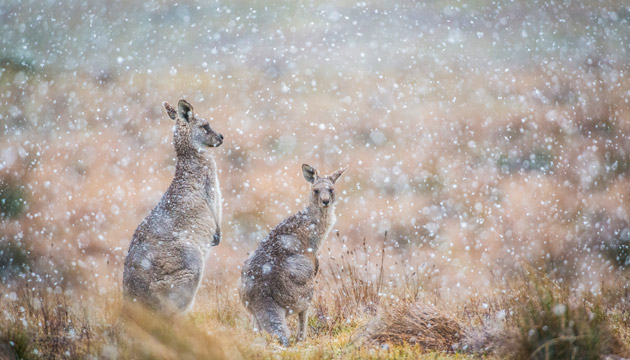The High Country is abundant in animal life, even through winter.
Photos Charles Davis
For many years, photographer Charles Davis, of Cooma, NSW, has ventured into the cold to capture images of a wide variety of native and feral animals in the snow.
One of his most controversial subjects is brumbies. Revered in folklore and adored by many, High Country brumbies currently number about 6000 in Kosciuszko National Park, 2500 in the eastern Victorian Alps and 70 on the Bogong High Plains. They have been documented causing significant damage to alpine wetlands, waterways and 97 percent of alpine mossbeds. Some areas, such as popular Cowombat Flat at the headwaters of the Murray River, have been particularly badly affected. Yet many people don’t want to see these majestic animals shot.
Chief conservation scientist with Parks Victoria, Mark Norman, says a three-year feral horses strategic action plan was put before the state Minister for Energy, Environment and Climate Change for approval in mid-May. It was prepared with input from groups such as the Australian Brumby Alliance and Victorian Brumby Association. “This is not an easy issue and people have strong emotions at both ends of the spectrum,” Mark says. “But we got quite strong agreement that there are some areas that have lots of damage.” Mark says the plan dictates that horse numbers will be controlled by an expansion of trapping, roping and mustering programs, which will be assessed to see how they are working. “Ground or aerial shooting is not on the horizon at this stage as an option,” he says.
Brumbies are not the only feral animal making an impact in the High Country. Last year a scientific paper published in Australian Mammology revealed that for the first time rabbits are in high numbers above the 1500-metre snowline, partly because they have adapted to eat eucalypt leaves.
This story excerpt is from Issue #113
Outback Magazine: June/July 2017










